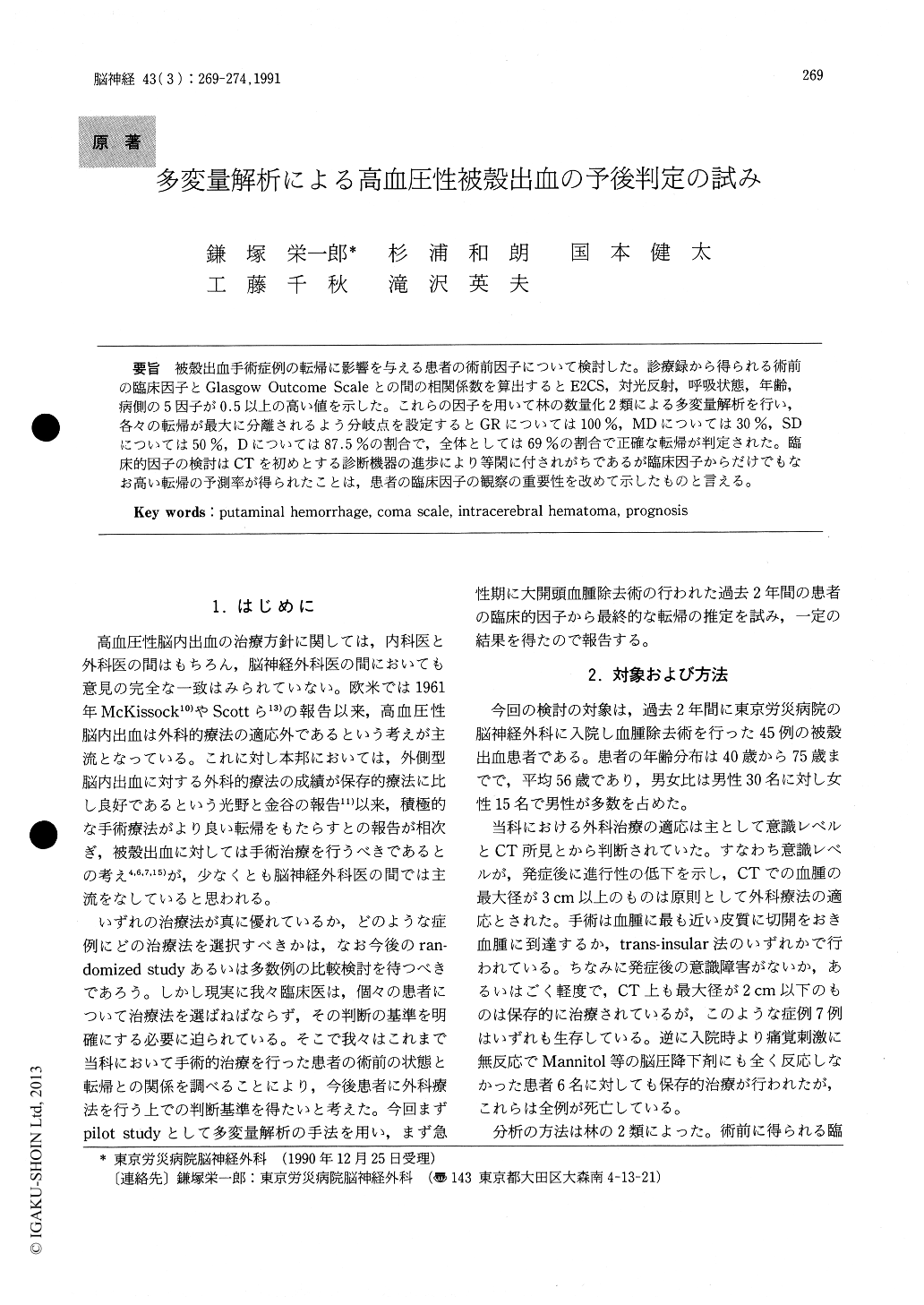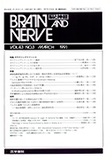Japanese
English
- 有料閲覧
- Abstract 文献概要
- 1ページ目 Look Inside
被殼出血手術症例の転帰に影響を与える患者の術前因子について検討した。診療録から得られる術前の臨床因子とGlasgow Outcome Scaleとの間の相関係数を算出するとE2CS,対光反射,呼吸状態,年齢,病側の5因子が0.5以上の高い値を示した。これらの因子を用いて林の数量化2類による多変量解析を行い,各々の転帰が最大に分離されるよう分岐点を設定するとGRについては100%,MDについては30%,SDについては50%,Dについては87.5%の割合で,全体としては69%の割合で正確な転帰が判定された。臨床的因子の検討はCTを初めとする診断機器の進歩により等閑に付されがちであるが臨床因子からだけでもなお高い転帰の予測率が得られたことは,患者の臨床因子の観察の重要性を改めて示したものと言える。
In order to determine the factors affecting the functional prognosis of operated putaminal hematoma patients, the relationship between the final outcome and the acute stage clinical factors were analyzed by the use of multimodality analysis method (Hayashi's Qualification Type 2).
Forty-five consecutive cases who admitted to and operated on during the last two years were included inthis study (30 male and 15 female patients, the distribution of age was 40 to 75 years old). Clinical factors justprior to surgery were collected from the case record and categorized to calculate the Pear-son's product moment correlation coefficient against the Glasgow Outcome Scale. Five clinical factors with the correlation coefficient above 0.5 (Edinbugh 2 coma scale (0.85), light reflex (0.67) , respiratory status (0.61), age (0.58) and the side of the lesion (0. 50) were used to apply the Hayashi's Qualification Type 2 analysis. By this method, each categories are given scores so that the different outcome sepa-rate maximamly.
The correct estimation ratio for outcome was 100% for good recovery, 30% for moderately disa-bled, 50% for severely disabled and 88% for death, over all correct estimation ratio being 69%. The mean scores for each outcome were 1 ± 0.01 for good recovery (9 cases), 0.74±0.32 for moderately disa-bled (10 cases), 0.6±0.36 for severely disabled (10 cases) and - 0.16 ± 0.37 for dead (16 cases). There were statistical significance (p<0.01) between each outcome except for moderately disabled and severe-ly disabled. This result suggests that the outcome of the operated putaminal hematoma patients could be estimated with reasonable accuracy by the combina-tion of preoperative clinical factors except moder-ately and severely disabled. The importance of clinical examination before surgery for the estima-tion of outcome was emphasized.

Copyright © 1991, Igaku-Shoin Ltd. All rights reserved.


